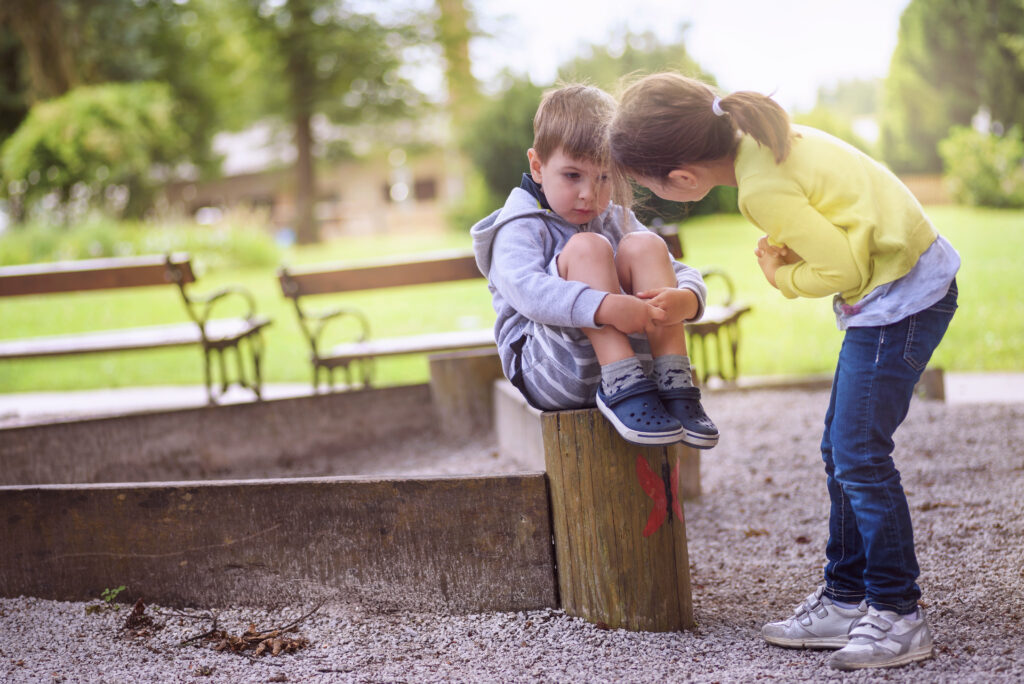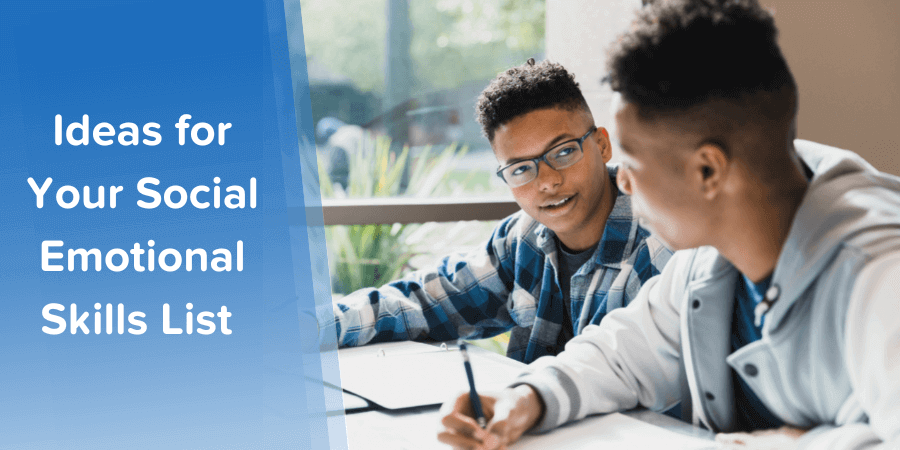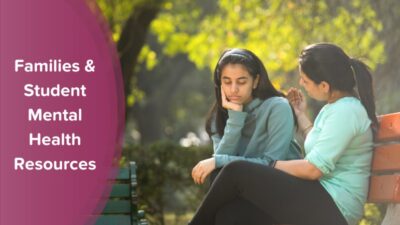by Maren Madalyn, contributing writer
Pencils? Check. Notebooks? Check. Erasers, lunch box, sparkly gel pens? Check, check, check!
Most educators and families might agree that there are fundamental resources that students need for classroom learning. OK, perhaps sparkly gel pens are nice-to-have. But students do need the right tools for the amazing job of learning.
Students also thrive when equipped with the right skills for learning. Skills like listening, organizing their work, using stress management effectively, creating social relationships, or taking ‘quiet time’ for themselves. These might not be on a back-to-school shopping list, but they are essential for academic learning and life beyond a classroom.
What do these tools all have in common? They are all life skills, also called social and emotional skills. And when these skills are in a student’s tool belt, they contribute directly to education’s personal and collective goals, to enable student development and success.
Let’s dive into a few examples from a social emotional skills list, developed here at ParentPowered, to learn how adults in students’ lives can teach them.

What is social emotional learning? Why does it matter?
The National Association of State Legislatures describes social emotional learning skills as those “not necessarily measured by tests: critical thinking, emotion management, conflict resolution, decision making, teamwork.” You might also think about life skills as an approach to educate the whole child – rounding out crucial academic learning like math and reading with learning about, well, being human.
Most models and social emotional learning standards emerged within the last few decades. You may recognize some, like the Wallace Foundation Framework or CASEL ‘Big 5’ for social emotional learning. While the details of these models and programs may differ, they all share this assertion: social emotional learning skills are teachable at all ages of a child’s life.
Ranging from emotional regulation to responsible decision-making to stress management, these life skills are essential for student development and success.
How social emotional skills improve student learning outcomes
Social and emotional learning helps children as they mature into independent adults. Research has found that deploying strategies to boost SEL competencies imparts huge personal and communal benefits on students, their families, and their schools, such as:
- Improvements in student behavior
- Gains in standardized test scores
- Stronger relationships with people around them, including parents
The benefits continue at the school community level, too. Social-emotional learning has been shown to increase graduation rates and reduce the probability of students dropping out of school. When teachers themselves have stronger social emotional learning skills, they also experience less burnout and report higher job satisfaction.
Here’s the thing – educators aren’t the only players on the team cultivating SEL skills like self management and a growth mindset in students. Families are essential when it comes to successful teaching of social-emotional learning. By engaging families in these practices, schools ensure that students have the opportunity to build core social and emotional life skills in the classroom, at home, and beyond.

A snapshot social emotional skills list for families
How do educators and families work together to instill social emotional learning skills in students? Through family engagement, of course!
We at ParentPowered designed our family engagement curricula specifically with families in mind. Our social emotional learning content is built on evidence-based skills and competencies linked to positive child outcomes. And we know that families, like educators, face time constraints – so our easy-to-implement activities always fit into existing home routines beyond the school day.
Let’s take a look at example strategies that families can use to cultivate each area from our social emotional skills list.
Building a positive sense of self and self esteem
As children grow older, they learn all about their own unique selves – their personality, likes, dislikes, and unique traits. Developing a positive sense of self is crucial.
Self-esteem is correlated with student academic achievement, with students that reported having positive self-esteem performing better in academic learning. High self-esteem also comes with long-term benefits for students, many of which persist well into adulthood. These include better social relationships, a stronger sense of community, and improved physical health.
Skill #1: Cultivating a belief in one’s worth
Every child is unique, and families send a powerful message to children when they celebrate their unique qualities. The more a child knows about themselves, the more confident they will be in social interactions and situations like recess or extracurricular activities. Confidence also helps when students are in an unfamiliar environment like a new school.
Bringing it to life: Ask your families to try this morning-time ritual: stand with your child and together look into the mirror. Take turns describing the student you reflected back. For example, a parent might say something like, “You are great at being kind to other kids.” Families can expand this ritual by asking children to share their own likes, dislikes, and curiosities.
Skill #2: Building self-confidence
Many of us can think of a time in our lives when we received positive encouragement from someone we trusted. With that feedback, at least for me, came higher self-confidence.
Families that share how their child makes them feel proud build that child’s self-esteem, and that confidence can translate to a positive school experience. Confident kids are more open to trying new things and learning new abilities.
Bringing it to life: Try encouraging parents to share one way their student makes them proud before lights out a bedtime, or during a quiet time in their schedule. For more ways to nurture self-esteem, watch our family Q&A video about how to support a child when they are feeling down about themselves.
Cultivating positive relationships with peers, family, and community
People thrive when in healthy relationships with friends, family (chosen or related), and broader community. Children are no exception. Strong connections can make a huge difference for a child’s school experience. Students that maintain healthy and supportive relationships with people, such as parents or other adults, are more academically engaged and have stronger social skills, leading to improvements in student behavior.
Students with strong friendships – beyond peer acceptance – are less likely to feel lonely and more likely to be engaged in classroom learning. Even having just one positive friendship can protect a child from the negative effects of being treated badly by others. Core social skills are essential for healthy living!
Skill #3: Practicing cultural responsiveness
People contain multitudes, including diverse backgrounds, cultures, and life experiences. When students celebrate the unique differences among us, they better navigate diverse cultural contexts and communities, create supportive relationships with peers, and learn from others around them.
Bringing it to life: Mealtime is the perfect place to nurture social awareness and appreciation for diversity in children. While they prepare a meal, encourage families to ask their children questions about what makes people unique in their communities. For example, a parent might ask, “Who’s someone that you know that’s really different from you? What are they like? What’s something that person does really well?” Celebrating differences among people is a powerful way to teach children the value of diversity.
Skill #4: Helping others
Everyone needs help from their community now and then. Giving kids concrete ways to contribute to the family home encourages them to pitch in to serve a larger community’s collective goals.
Bringing it to life: After mealtime or a family activity, parents can ask their child to become their special helper. Encourage families to assign kids tasks such as wiping down the kitchen table or (if age appropriate) washing the dishes in the sink. When students give regular time to assisting around the home, it deepens their sense of community, as well as skills that foster responsibility and independence.
For more family resources to help students create positive social relationships in the community, download our guide Let’s Build Friendship Super Skills.
Understanding emotions and self-regulating
As much as we humans leverage logic and reasoning skills, emotional experiences also guide us to understand and move through the world. Learning to recognize, care for, and regulate one’s emotions in a healthy way is crucial to make constructive choices and navigate challenges in life.
The Berkeley Wellbeing Institute defines emotional regulation as “the ability to affect one’s own emotional state.” This capacity is both a key child development milestone and often found in social emotional learning curriculum for students.

Research shows that a child who is capable of regulating their own emotional response often has more positive relationships with people, experiences improved academic learning outcomes, and has better problem-solving skills.
Skill #5: Using calm-down strategies
Sometimes, student emotions get big – really, really big. And when big feelings arise in a child, it helps tremendously for them to have go-to calming strategies at their fingertips. Families can practice calm-down strategies alongside their students, which models emotional regulation that benefits the whole family.
Bringing it to life: Have families incorporate deep breathing, a highly-effective stress management technique, into their daily routines. For example, they can ask their child to ‘blow open the front door’ on their way out of the house to school or to run errands. After the child (and parent!) together complete three big belly breaths, they can then open the door.
By practicing deep breathing daily, parents can then encourage their child to call upon this emotional regulation strategy when tough feelings come up. This is especially helpful if quiet time or other calm-down strategies aren’t available. A meltdown in the cereal aisle is a perfect time to practice deep belly breathing!
Skill #5: Taking others’ perspectives
Every person experiences emotions as part of their life. Kids that learn how to recognize and identify emotions experienced by others are better able to make friends or at least create friendly relationships with people.
Bringing it to life: Here’s an easy, empathy-building bedtime routine for parents: as you tuck your child into bed, play the “What If” question game. For example, parents can ask questions like, “What if you saw a friend who looked lonely? Mad? Sad? What would you do or say?” Try modeling relationship skills that might help in these “what if” situations, like active listening or comforting a friend. A stuffed toy works wonders to imaginatively play out what perspective taking looks like in supportive relationships!
For more family activities all about managing emotions, check out these videos from our “Calming Down” series:
Fostering executive functioning and independence
Harvard Medical School defines executive functioning as “skills that help us focus, plan, prioritize, work” toward actionable goals. These important abilities also help people self-manage their behaviors and emotions, adapt to unfamiliar environments, and engage in abstract thinking and planning.
In fact, executive functioning skills are so important that they take significant time to build — developing from childhood all the way into our late 20s! That’s because our brain’s prefrontal cortex, the part responsible for skills involved in executive functioning, takes that long to mature fully. Students of all ages have room to grow these crucial life skills.
Skill #7: Creating routines
Kids thrive in structured environments. Knowing what to expect in a day helps a child feel more confident and independent – even as they get older and create their own routines!
Bringing it to life: Families can build routines by first reflecting on their children’s current learning habits and abilities. Asking questions like, “What time of day is my child most focused?” or “What helps my child keep their focus on a task?” can guide families to craft the home structure that might best foster learning. Remember that existing home schedules are the perfect time for everyday learning as they help families work around time constraints!

Skill #8: Acting independently
Adults are expected to take care of many things on their own. A great way for families to foster a child’s sense of independence and self awareness as they grow up is with practice in a low-pressure environment like home.
Bringing it to life: Here’s an activity for families to encourage students to make responsible decisions and organize their own work. Have parents put their student in charge of getting something ready, like a project or a meal. Encourage families to sit down with their child and work together to decide what they will need for this project, making a list of all items.
As an extra challenge, parents can then invite the child to gather everything on the list from around the home – all on their own. Of course, parents can give plenty of reminders and high-fives, which model positive relationship skills, too!
Problem-solving, resolving conflict, and building resilience
We face challenges or conflict. Perhaps we get lost while traveling, hit a roadblock during a project, or get into an argument with a close friend. Conflict is a natural part of our world; problem-solving skills help us move through choppy waters. Students with the skills to navigate conflict, solve challenges collaboratively, and build resilience are equipped for near- and long-term success.
Skill #9: Collaborating to solve problems
Research suggests that collaborative problem solving – the ability for student’s to find solutions in partnership with others – helps students learn crucial skills highlighted in the 4Cs in 21st Century Learning and Innovation Framework. And this skill goes a long way in academic learning, as problem-solving skills are crucial for math and science.
Bringing it to life: Try encouraging families to engage students in activities that require invention and creativity to foster these skills. For instance, gather materials like recyclables already available at home and challenge students to use these items to build something that rolls. Then ask kids to explain how their creation works and what ideas they tried before finding a solution. Trial-and-error are part of the problem-solving and collaboration process – inventing and resilient persistence go hand in hand!
Skill #10: Practicing positive thinking
A little bit of optimism can go a long way in helping a student build resilience in the face of challenges. Families can help students cultivate positive thinking by holding dedicated time during bedtime routines for reflection on a personal level.
Bringing it to life: Encourage families to ask questions like “What’s something that you do that you feel really proud of? Can you name three things?” These guiding questions give students a chance to celebrate their abilities and accomplishments. This in turn builds their confidence and helps them then use this kind of thinking at school, during extracurricular activities, and beyond.
For more inspiration on building resilience in children, share our video for kids all about how to bounce back after making a mistake – adults might benefit from it, too!
Social emotional skills are key to student success
Building positive relationships with people, practicing emotional regulation strategies, managing time and tasks – all of these and more support student development and success in the long run. Our social emotional skills list here is just the tip of the iceberg of possibility.
Just as pencils, paper, and other tools are necessary learning resources for students to build their math and reading skills – so too are social emotional skills!

About the author
Maren Madalyn has worked at the intersection of K12 education and technology for over a decade, serving in roles ranging from counseling to customer success to product management. She blends this expertise with fluid writing and strategic problem-solving to help education organizations create thoughtful long-form content that empowers educators.






